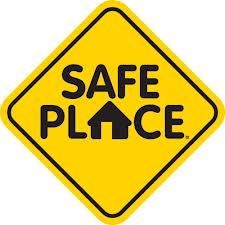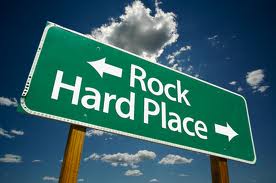Understanding the Real Story on Immigration and Sanctuary Cities

Donald Trump did more than any presidential candidate to put the issues surrounding immigration and border security on the national agenda. He used the tragic and horrific murder of 32 year-old Kate Steinle by Juan Francisco Lopez-Sanchez as evidence of our unsafe border and inadequate enforcement of immigration laws.
Lopez-Sanchez had been convicted seven times on felony charges and had been deported five times, as recently as in 2009. He claimed that he found the weapon and it discharged accidentally killing Steinle, but that really doesn’t matter… no one is in favor of what happened in this sickening case.
The question is, how did it actually happen? What policies or police practices failed that allowed Lopez-Sanchez to commit this heinous crime? And what is Trump proposing that would make what happened to Steinle less likely in the future?
Following the murder of Steinle, federal immigration authorities blamed the San Francisco Sheriff’s Department for releasing him without informing those authorities of his release, but that’s not even close to the whole story.
So, here are the facts…
Lopez-Sanchez was serving time in a federal prison and there was a pending removal order in effect by Immigration and Customs Enforcement (ICE).
However, instead of turning Lopez-Sanchez over to ICE to be deported, the Federal Bureau of Prisons transferred him to San Francisco to face a 20 year-old charge for possession of marijuana. When the San Francisco District Attorney’s office decided not to prosecute Lopez-Sanchez for the 20 year-old minor crime, they released him… he later acquired the gun and killed Steinle.

Now, I just want to reinforce the point that no one is in favor of anything that happened here… NO ONE. There is no pro-Sanchez-Lopez movement in this country or anywhere else for that matter. The question is what to do in order to ensure that what happened to Steinle doesn’t happen again, or at least not as a result of the same bureaucratic blunders.
Unfortunately, this is not a simple issue to resolve, no matter what Trump said during the campaign. It’s certainly not something that will be addressed by building a wall or by eliminating funding to what are referred to as “sanctuary cities.”
To listen to politicians advocating the solutions proposed by Donald Trump while campaigning for the presidency, you’d think that the task of determining whether someone is here legally or illegally is a simple and straightforward one… a task that local cops anywhere could easily handle.
The problem is… that’s not the case.
There are many reasons that someone without a green card could correctly claim to be here legally. Perhaps they’re here visiting friends or relatives. Maybe they’re here attending college. Maybe they are here to avoid political prosecution in their own country. Maybe they’re here on a business trip or they’re a visiting college professor.
According to the Migration Policy Center roughly one third of undocumented immigrant parents have an American citizen child. Others are married to legal residents.
How could a local traffic cop determine what the situation is, as he stands on the side of a highway writing a ticket? The answer is… he can’t.
In order to ascertain a person’s legal status in this country requires that individual to have their day in court. Today, according to the Wall Street Journal, there are estimated 375,000 cases in line to be heard by immigration judges in this country… it takes 4-5 years before a case is heard in court.
“The U.S. immigration detention system has the capacity to detain about 33,000 people at a time, and there are an estimated 10 million to 12 million illegal immigrants in the United States.”
“A Pew Hispanic Center study estimated in a 2010 study that 300,000 people per year illegally entered the United States, 150,000 of those are Mexicans.”
If we did arrest people suspected of being here illegally, where would we put them while they waited years for their day in court? How many would be falsely arrested?

Can you imagine the chaos? And with local law enforcement devoting their resources to going after those suspected of being here illegally, how would they be able to pursue those that commit serious crimes? They answer is they wouldn’t… and that would be a very bad thing.
I asked Mark Zanides, a former U.S. Attorney for 26 years…
“When you have limited resources, and you always do, you have to marshall them to do the most good. Chasing around those here illegally that have not committed serious crimes, would not be a good use of those resources.”
Now, what are “sanctuary cities,” and why do they exist?
The way the media is portraying it, you would think that these cities are run by a bunch of liberals who want open borders and, as “sanctuary cities,” are literally inviting undocumented immigrants to come live there so they’ll be safe from those that would seek to enforce our nation’s laws.
It’s as if they have billboards and brochures saying…
“In this country illegally? Come to Boston, or Detroit, or St. Paul, or Charlotte, or Dayton, or Oklahoma City, or Dallas, or Milwaukee, or Salt Lake, or the entire state of North Dakota, among hundreds of others designated as sanctuary cities.
Do all those places sound like they’re run by liberals? North Dakota, Salt Lake or Oklahoma City? Aren’t those all red states?
We also have to understand that in the 2012 case, Arizona v. United States, the Supreme Court ruled that only the federal government has the authority to provide border security and enforce the country’s immigration laws. The high court ruled that local law enforcement are NOT ALLOWED to start investigating and arresting people solely because they suspect that they may be here illegally.
Not that they’d be able to do it anyway…
Cities around the country and especially those with significant immigrant populations… and there are several hundred of them by all counts… simply cannot devote their resources to to identifying non-criminal, undocumented immigrants for a number of reasons.

It’s not because they’re lazy.
It’s because local law enforcement depends on law abiding members of the community to report and help them solve crimes, and they know that if immigrants knew that by calling the police to report a crime, they could end up deported or detained for years waiting for their day in court, they’d stop assisting local police when trying to solve serious crimes.
How often would you call the cops to report a crime in progress if you knew you could end up in real trouble with the immigration authorities? And what if a police officer asked you if you saw anything… how often would you come forward as a witness?
The clear answer is somewhere between not often and never. And law enforcement knows that’s the case better than any of us. They know that without the cooperation of the community, fewer crimes would get solved. And if the chances of being caught for committing a crime decreases, more crimes will occur.
Just consider the scale of the problem…
Trump has claimed that there are 2-3 million here illegally that are serious criminals. During his recent appearance on 60 Minutes, the president-elect said…
“What we are going to do is get the people that are criminal and have criminal records, gang members, drug dealers, where a lot of these people, probably 2 million — it could be even 3 million — we are getting them out of our country or we are going to incarcerate.”
But, are there really millions of undocumented immigrants roaming the streets in this country that are serious criminals? It seems unlikely, especially when you consider the following numbers…
“Gillian Christensen, a spokesman for the U.S. Department of Homeland Security, said the federal government deported nearly 395,000 people last year, the highest number in history. Christensen said that figure includes more than 195,000 convicted criminals, showing a focus on “criminal aliens who are threats to public safety.”
That’s a long way from two or three million, right? How would someone go about finding that many people, here illegally and a criminal at large. And if you ever could find that many people in that category, what would you do with them. Consider the following…
The American criminal justice system holds more than 2.3 million people in 1,719 state prisons, 102 federal prisons, 942 juvenile correctional facilities, 3,283 local jails, and 79 Indian Country jails as well as in military prisons, immigration detention facilities, civil commitment centers, and prisons in the U.S. territories.
According to U.S. District Judge Thomas Thrash: “The widespread belief that the federal government is doing nothing about illegal immigration is belief in a myth.”

We need to fix immigration policy in this country, but it’s really not a matter of simply enforcing the existing laws… that’s not the problem.
Isabel Rubio, executive director of the Hispanic Interest Coalition of Alabama explains…
“To emigrate is a very complicated process; it takes a lot of time, and it takes a lot of money. Because of a close to 20-year backlog for residents of Mexico, people don’t feel like they have 20 years to wait in line.
So they choose to come to this country without permission, because their labor is needed in many of the low-wage, low-skilled jobs in our country. But because of how they entered, they have no opportunity to come out of the shadows.”
“For someone who has entered the U.S. without authorization, whether as an adult or an infant, there is generally no recourse to change their immigration status while they are here illegally.”
Does that seem like the optimal U.S. immigration policy?
I can’t imagine how anyone would think so. The question is, how do we improve the current state of affairs related to undocumented immigrants.
A wall isn’t likely to change anything. For one thing, as the Pew Research mentioned above showed, only half the undocumented immigrants that come to this country each year are even from Mexico, and besides that people find ways around most walls anyway.

Plus, consider that our border with Mexico is 2,000 miles long… that it sits in the middle of the snaking Rio Grande… that our treaties with Mexico prohibit either us or them from constructing anything within the river’s flood plains… and that unlike other southwestern states, most of the border land in Texas is privately owned. Arizona offers its own challenges, with steep terrain that would make building a wall very expensive.
Remember, we started a wall along the U.S./Mexico border in 2006. President Bush signed the bill, I remember watching him do it. We got about 650 miles of some sort of wall done, and that was that.
According to an AP News story published in The Guardian, Denise Gilman, a law professor at the University of Texas, obtained hundreds of emails related to building the wall through the Freedom of Information Act… and she shared them with AP News…
“Officials struggled to find places where construction could start fast to meet Congress’ deadline of building 255 miles by December 2008. They sought contingency fencing that did not require “significant real estate acquisitions” or cut through sensitive wilderness, the emails show. Wealthy landowners demanded more compensation or refused to allow construction.
Hundreds of property owners were sued just to build the existing chunks of wall. Some 400 relinquished properties ranging in size from a driveway to commercial lots and farms, costing the government at least $15 million, according to an AP review of land cases in 2012.”
If that doesn’t sound like a long, drawn out process, I don’t know what would. It’s certainly not as simple as calling out the construction crews to start building.
And then there’s the cost…
Segments that were built in 2008, the last time work was done, cost $6.5 million per mile of wall, so based on that, completing the remaining 1300 miles will cost approximately $10 billion.
I realize that Donald Trump said he’d get Mexico to pay for our wall, but that seems at least somewhat improbable based on what the Mexican president has said. And it might become impossible if we pull out of NAFTA, another cornerstone of Trump’s campaign.

Look, I don’t know, maybe President Trump will find some way to build some sort of wall along some portion of the border, but clearly it’s not going to accomplish what it sounds like it might.
In Conclusion…
I understand the impulse to blame undocumented immigrants for a myriad of problems in this country. I also understand and agree that we need to do something about our immigration policy, because what we’re doing now makes no sense.
The answers, however, aren’t going to be easy to find, agree on, or implement. In order to do what Trump has said he’d do, think of all the obstacles in the way. A Supreme Court decision prohibiting states and cities from enforcing immigration laws is just the tip of the iceberg. The practical limitations of traffic cops being unwilling and unable to verify immigration status are likely insurmountable.
Many things can’t be understood by listening to soundbites on T.V. news. Immigration is one of those things, but trade agreements and tax cuts are no different. Saying you’re going to repeal the Affordable Care Act is a lot easier than actually coming up with a plan to replace it.
As they say, God is in the details.
I know there are many in this country terrified about what President Trump may do as related to immigration policy in this country. I understand the outrage, after all, he did promise that he’d do some outrageous and inflammatory things during his campaign, and cabinet appointments like Sessions, Blackwell and Flynn certainly haven’t helped calm anyone down.

But, while Mr. Trump has been the king of his company and then his campaign, he has now, by winning the election, been demoted to lowly president, and like all presidents in my lifetime he’s destined to discover that most things are much more complex and difficult to change than it appeared from the sidelines.
It’s already begun…
A few days ago, House Speaker Paul Ryan, in an interview on CNN was asked about Trump’s plan for some sort of nationwide deportation force tasked with finding and deporting several million undocumented immigrants. Ryan said that people should “put their minds at ease” because neither Trump nor rank-and-file Republicans want anything like that.
According to Speaker Ryan…
“We are not planning on erecting a deportation force. Donald Trump is not planning on that.”
Some took what Trump said literally but not seriously.
Others took what he said seriously but not literally.
Now we’ll see what he says and does in reality.
Mandelman out.


